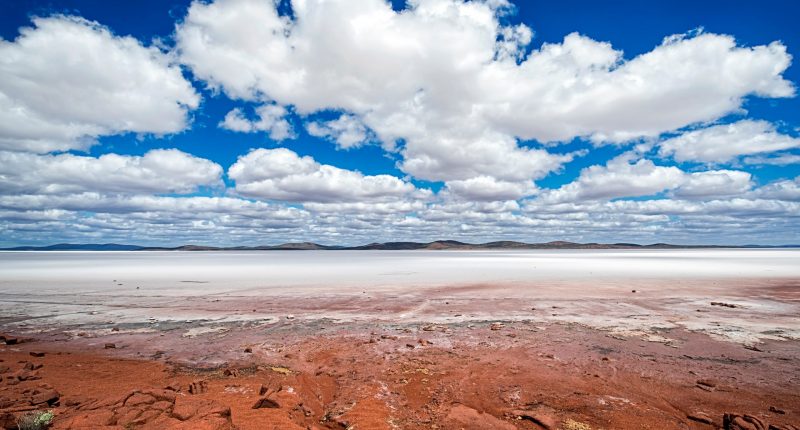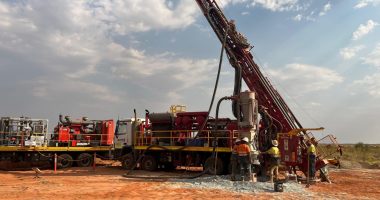Alligator Energy Ltd (ASX:AGE) says its maiden drilling program at the Big Lake Uranium Project has yielded a significant discovery, picking up a notable presence of anomalous uranium within interbedded palaeochannel sand units in the Namba Formation.
This – Alligator says – proves the concept of a large amount of uranium being present within the basin sediments of South Australia’s Lake Eyre, with these sediments lying above the Cooper Basin – rich in hydrocarbons – and being within potentially In-Situ Recovery (ISR) amenable host and depths.
Palaeochannel sand units hosting uranium mineralisation were intersected in four aircore holes during this drilling work, with the mineralisation sitting between 90 and 130 metres below the surface.
Alligator’s team has also run a calibrated portable X-ray fluorescence analyser (pXRF) across drill samples, allowing it to make early estimates of the uranium grades, which have included 20 metres at 110 ppm (parts per million) uranium from 106 metres (including 1 metre at 241 ppm from 123 metres); and 1 metre at 185 ppm uranum from 129 metre in one hole.
CEO Greg Hall said the type of mineralisation picked up through this early drilling work supported previous expectations for the territory’s uranium potential.
“This is the first significant greenfields discovery of uranium in South Australia since the Samphire Uranium Project in 2007 by the company UraniumSA Ltd,” he said.
“The thickness extent of mineralisation layers ranging up to 20 metres in these discovery holes is impressive for this style of mineralisation.
“While estimated grades are still on the lower side, to have grade-thickness intersections close to the cut-off used at our Samphire Project from the initial discovery area is very encouraging.
“The discovery appears to validate the uranium formation model developed by the previous Big Lake geologists from whom Alligator acquired the initial tenement, and we acknowledge their work.
“The sediments above the Cooper Basin cover are an extensive area, and we hope this has the potential to develop into a new ISR amenable uranium field, similar to the Curnamona Province which hosts the Beverley, Four Mile and Honeymoon deposits.”
Alligator saw its share price rise on the news. At 13:55 AEST, shares were trading at 4 cents, a rise of 8.11% since the market opened.









